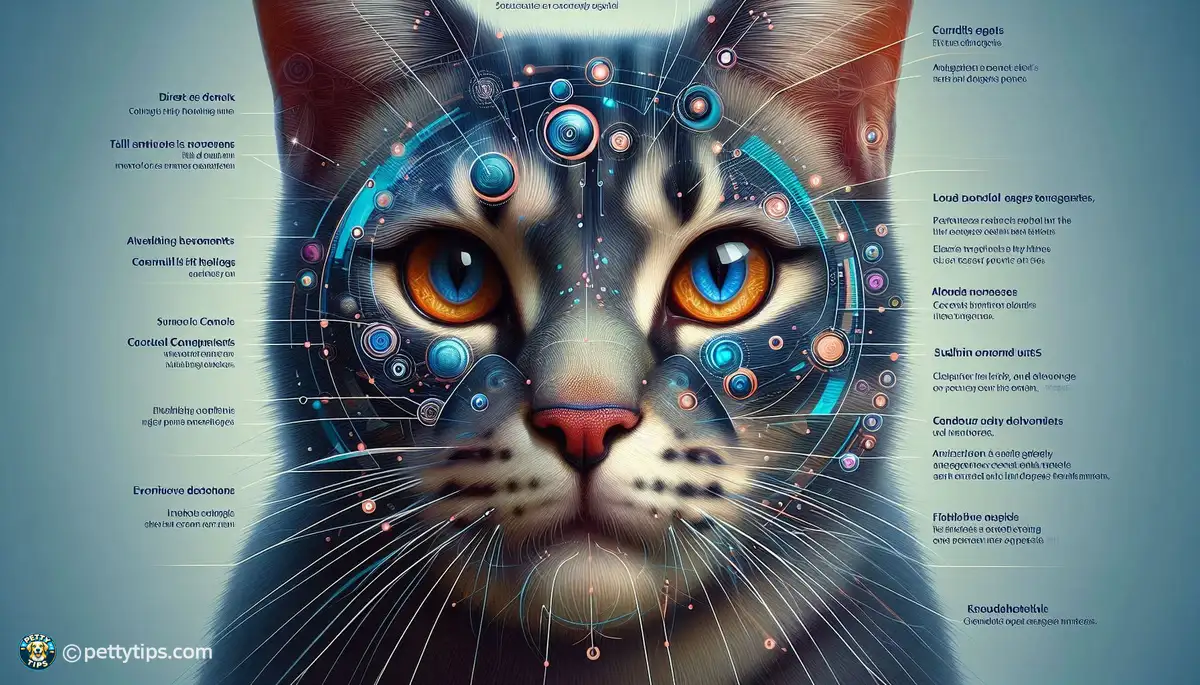
Feeding Strategies to Satisfy a Cat's Hunting Instincts
Gabriel Wallace - Sep 29, 2024 - 5 min read


Understanding what triggers aggressive behavior in cats can often feel like deciphering a complex puzzle. Cats, known for their independent nature, can exhibit a wide range of behaviors, including aggression, which may vary from subtle signs to more overt displays. Recognizing these triggers is crucial for maintaining a harmonious relationship with your feline companion.
Feline aggression can manifest in various forms, each with its own set of triggers and underlying causes. From territorial aggression to fear-induced aggression, cats may display aggression in response to perceived threats or stressors in their environment. Identifying the specific type of aggression can help pinpoint its triggers more effectively.
Recognizing the signs of aggression in cats is essential for proactive intervention and prevention of potential conflicts. While some cats may exhibit overt aggression, such as hissing, growling, or swatting, others may display more subtle signs, such as flattened ears, dilated pupils, or tense body language. Understanding these cues can help pet owners identify triggers before a situation escalates.
Cats are inherently territorial animals, and conflicts may arise when their territory feels threatened. Territory guarding can extend beyond physical spaces to include valuable resources such as food, water, or litter boxes. Changes in the environment or the introduction of new pets may trigger territorial aggression as cats seek to establish or defend their territory.
Stressors in the environment can significantly impact a cat's behavior, leading to aggression as a coping mechanism. Common stressors may include changes in routine, loud noises, unfamiliar visitors, or even conflicts with other pets. Understanding the sources of stress in your cat's environment is crucial for minimizing triggers and promoting a sense of security.
Proper socialization plays a vital role in shaping a cat's behavior and temperament. Cats that have not been adequately socialized during their formative weeks may exhibit fear-based aggression towards unfamiliar people or animals. Early socialization experiences can help cats develop confidence and adaptability, reducing the likelihood of aggression in unfamiliar situations.
Physical discomfort or underlying medical conditions can contribute to aggressive behavior in cats. Painful conditions such as dental issues, arthritis, or injuries may cause cats to lash out defensively or become irritable. Regular veterinary check-ups and prompt treatment of any health concerns are essential for maintaining your cat's overall well-being and minimizing potential triggers for aggression.
Hormonal changes can also influence a cat's behavior, particularly in unspayed or unneutered individuals. Hormonal surges during mating seasons may lead to increased territorial aggression or conflicts with other cats. Spaying or neutering your cat can help mitigate hormonal influences and reduce the likelihood of aggressive behavior associated with mating instincts.
As cats age, they may undergo physical and cognitive changes that affect their behavior. senior cats may experience increased irritability or sensitivity to their surroundings, leading to potential triggers for aggression. Providing appropriate accommodations and veterinary care tailored to senior cats' needs can help alleviate age-related stressors and promote a peaceful environment.
Redirected aggression occurs when a cat, unable to direct its aggression towards the perceived threat, lashes out at a nearby target, often another pet or even a human. This behavior can be triggered by external stimuli such as outdoor animals or unfamiliar noises. Understanding the dynamics of redirected aggression can help pet owners intervene effectively and prevent escalation.
In some cases, unintentional reinforcement of aggressive behavior can perpetuate and escalate aggressive tendencies in cats. Reacting with fear or punishment may reinforce the cat's belief that aggression is an effective means of communication or defense. Instead, focusing on positive reinforcement techniques and redirecting the cat's behavior towards more desirable alternatives can help reshape their responses to triggers.
Enriching your cat's environment and providing mental stimulation can help reduce stress and prevent boredom-related aggression. interactive toys, scratching posts, and designated perching areas can offer outlets for natural behaviors and redirect energy away from potential triggers. Additionally, behavioral modification techniques, such as desensitization and counterconditioning, can help cats learn more appropriate responses to stressful situations over time.
Understanding the triggers for aggressive behavior in cats requires a multifaceted approach that takes into account various environmental, physical, and behavioral factors. By identifying potential triggers and addressing underlying causes, pet owners can create a supportive environment that promotes their cat's overall well-being and reduces the likelihood of conflicts. Through patience, observation, and proactive intervention, cat owners can foster a harmonious relationship built on trust and mutual understanding.